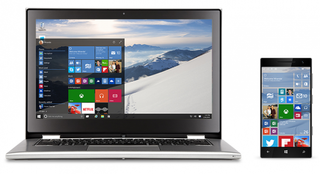Windows 10: Which Edition Is Right for You?

Unlike Apple, which releases just one version of OS X at a time, Microsoft has many different flavors of its upcoming operating system. Now that Windows 10 is close to being launched, the company has released a list of all the different editions available. Here's what you need to know about each one.
Desktop
There are only two versions of Windows 10 on PCs that most people need to know about: Windows 10 Home and Windows 10 Pro. Both work on a wide variety of systems, including desktops, laptops, 2-in-1s and tablets.
Windows Home will be the version of choice for most people, because it includes all of the major features of Windows 10, such as Cortana, the Microsoft Edge Web browser, Continuum for seamless transition between desktop and tablet views, and support for universal apps from the Windows Store.
Windows 10 Pro is for tech-savvy power users or small businesses that need things such as built-in BitLocker encryption, Hyper-V virtualization, legacy Internet Explorer support and remote-desktop features. For the average user, this is generally overkill and not worth the extra money it will probably cost to get the Pro version.
Users who are already running Windows 7 or Windows 8 Home or Pro will be able to upgrade to the corresponding version of Windows 10 at no charge for a year after the new operating system's release. There's no word yet on pricing for new installations or for those who fail to upgrade during the first year.
MORE: Best Laptops
Enterprise and Education
Large schools and businesses can get versions of Windows 10 that are more specifically tailored to their needs. These versions require a base installation of Windows 10 Pro and a volume licensing purchase that gives businesses access to Windows Update for Business, long-term servicing and advanced security functions. Schools benefit from Windows 10 Education through volume licensing, which reduces the price of the OS while still offering enterprise-level tools.
Stay in the know with Laptop Mag
Get our in-depth reviews, helpful tips, great deals, and the biggest news stories delivered to your inbox.
Mobile
For the mobile version of the new OS, Microsoft eliminates the Pro edition and gives users the choice between Windows 10 Mobile and Windows 10 Mobile Enterprise, the latter of which is designed for businesses.
Windows 10 Mobile also will be available as a free upgrade from Windows Phone 8.1, and will come preinstalled on new Windows Phones after the OS is released. It includes support for universal apps, new touch-optimized versions of Office, and Continuum for phone, which lets you use your phone like a portable desktop when it's paired with an external monitor, mouse or keyboard.
Windows 10 Mobile Enterprise, like its desktop counterpart, adds extra security features and better IT management to help keep fleets of business phones in sync and up-to-date.
MORE: Top 25 Windows Phone Apps
Internet of Things
There's even a special version of Windows 10 for devices like the Raspberry Pi 2, robotics kits, and Arduino that features a more lightweight core and a reduced price tag, though we don't currently know how much cheaper it will be than the base version of Windows 10.
When Will Windows 10 Be Available?
Microsoft says Windows 10 will be available beginning this summer, but the company has yet to announce an official release date or pricing for stand-alone versions. If you're interested in seeing the current state of Windows 10, you can download the preview builds of Windows 10 and Windows 10 Mobile from Microsoft's Windows Insider site.
